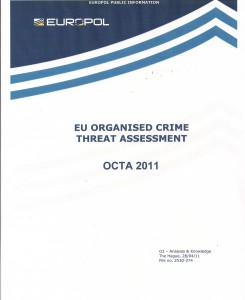
Organised crime is changing and becoming increasingly diverse in its methods, group structures, and impact on society, reveals Europol’s 2011 Organised Crime Threat Assessment (OCTA), published today.
The bi–annual report, which assesses current and expected trends in organised crime affecting the European Union, explores how a new criminal landscape is emerging, marked increasingly by highly mobile and flexible groups operating in multiple jurisdictions and criminal sectors.
The report highlights the fact that criminal groups are increasingly multi–commodity and poly–criminal in their activities, gathering diverse portfolios of criminal business interests, improving their resilience at a time of economic austerity and strengthening their capability to identify and exploit new illicit markets. Activities such as carbon credit fraud, payment card fraud and commodity counterfeiting attract increasing interest due to a lower level of perceived risk.
Summary of the Report (Full Report Below)
EU Organised Crime Threat Assessment: OCTA 2011
Phi Beta Iota: This is the executive summary paragraph that resonates with us:
- The knowing cooperation of specialists in the transport, financial, real estate, legal and pharmaceutical sectors is a notable facilitating factor for organised crime. In the current economic climate businesses, particularly in sectors capable of providing support for commodity trafficking or money laundering, have become more vulnerable to corruptive influence.



